ADVERTISEMENT
Disaster - Haiti Observer Blog
Disaster, Haiti Observer Blog. Read the following articles about Disaster
Insurance to Sell Disaster Coverage in Haiti
Haiti is subject to catastrophic earthquakes, violent hurricanes, and deluges of rain on an intermittent basis.
The amount of damage done by these natural disasters adds up to hundreds of millions of dollars. While in the U.S., a significant number of the population carries disaster insurance, in Haiti its population of 10 million carries virtually none. Data collected shows only 0.3 percent insured against disaster occurrences. To address the financial loss the island experiences every time a natural disaster hits, two agencies have proposed solutions.
The International Finance Corporation, division of the World Bank, is launching a $1.96 million initiative to insure 70,000 small business owners without adequate disaster coverage. Without insurance, business owners can't pay their accounts, because losses have devoured whatever capital left. And a low credit rating disqualifies them for loans necessary to get their businesses operating again.
Impact of Haiti Earthquake Still Felt After Three Years
Three years after Haiti's earthquake shattered the country's infrastructure, little has happened in recovery efforts. Immediately following the quake, the population of Port-au-Prince slept on streets, sidewalks, their autos, or jerry-built hovels. Thousands of bodies lay decomposing in the open air with rising levels of putrefaction. Delays in aid distribution caused random outbreaks of violence and survivors retaliated.
Please click here for more pictures of the 2010 Haiti Earthquake....
Destruction of Port-au-Prince and the regions' historical and government buildings were demolished or heavily damaged. Ruination of Haiti's infrastructure has added up $8 billion. Even though the country received $9 billion in aid, less than 10% has been spent in rebuilding localities. Recovery funds have been misspent in the millions due to not prioritizing urgent and wide-scale improvements needed. A result of this shows at least 500,000 quake survivors still living in tent cities in Port-au-Prince.
What happens when someone has no Fear
Despite fear being universal in all human beings, some individuals could actually lack the sense of fear in a given situation.
Yes, fear is beneficial in identifying danger and preparing for it, but what if one does not feel fear despite the danger?
The absence of fear is characterized by one's neglect of any risks that could happen when faced with a dangerous situation. This is solely situational of course, depending on the individual and the factors at hand. When it comes to motherly instinct in animals for example, a mother fearlessly fights off a predator much bigger and stronger than she is when the life of her offspring is threatened. This is also the case for human beings when children are involved.
Tips On Dealing With Disaster While Travelling
The weather can be unpredictable. Disasters can occur anytime, anywhere, even if you are on a trip. Being in a different place when disaster hits can be confusing and difficult, especially if you are in another country. Given this, you have to be prepared all the time so that you can deal with disasters while you are travelling.
First of all, it is necessary for you to read every document and policy given to you by your travel agent. This would inform you of rules and regulations involving bad weather during trips and other related circumstances. You should also do the same with your travel insurance so that you can know if you can get a refund should you have to cancel your flight due to a calamity.
How Haiti Government Handles Disasters
Over the years, Haiti has dealt with several disasters. The latest calamity it had to face was Hurricane Sandy, which claimed the lives of more than 50 people. The hurricane also destroyed houses, farms and infrastructure when it battered the country for days. Threats of cholera outbreaks and other diseases also loom over the country as about 350,000 people lost their homes.
With the situation, the government under President Michel Martelly called on the international community for help. Together with the United Nations, the government asked for additional $74 million in relief aid, which will be used to rehabilitate farms and reconstruct homes, among others. Basically, the government is depending on foreign assistance to deal with the disaster's aftermath. The call for help was not ignored, as foreign charity organizations such as Oxfam and the United Nations relief agency have been working to help people affected by the hurricane.
Devastating Consequences For Haiti following Hurricane sandy
Haiti is dealing with the aftermath of Hurricane Sandy, which killed dozens of people and damaged crops in the country late last month. Reports said that more than 50 people died and others went missing when strong rains and winds wreaked havoc in the country, especially in the southern part. Heavy downpour continued for three days, causing widespread floods and road blockades. Prime Minister Laurent Lamothe said earlier that the entire South was submerged. In the southern city of Les Cayes, most neighborhoods were flooded and hundreds of people lost their homes.
Hurricane Sandy destroyed concrete homes and even tent camps, where about 370,000 people who were still affected by the 2010 earthquake, were taking refuge. Crops were also damaged, with the production of bananas and breadfruit, which are main staples in the country, hampered.
Cap-Haitien, Limonade and Quartier-Morin flooded
On the night between Thursday, November 8 and Friday November 9, 2012 heavy rains poured for in the North Department causing lost of several lives as well as damages to homes and agriculture.
The cities and towns most affected include: Cap-Haïtien, Limonade and Quartier-Morin. It was also reported that some towns in Nippes Departments were affected. It include Baradères, de Fonds des Nègres, Miragoâne, Petit-Trou, Plaisance and L'Azile.
Video:
It has been reported that about 12 people became victim of the flood so far. This is e preliminary assessment. Most of the victims lived in the beds of ravines and were surprised by the flash floods. Several people were reported missing.
Health, Medical, and Environmental Risk Factors of Cholera
Cholera, a severe bacterial infection, affects the intestines, causing bouts of watery diarrhea, heaving, circulatory distress, and shock. Anyone can contract cholera, the exception being nursing infants. But there are particular contributors that can predispose people to the illness:
Malnutrition. People who are starving have a propensity to catching cholera. The illness takes hold in places where survivors of war or natural disasters live. Or in communities that suffer famine.
Low levels of stomach acid. Inadequate levels of stomach acid create an environment for cholera bacteria to flourish in. Age groups that have low-acidity markers are children and aged people. Gastric surgery survivors and antacid takers, suffering from ulcers, are also prone to getting cholera.
Massive Hurricane Sandy left 44 dead in Haiti and counting - See video
The biggest storm this hurricane season is likely to be the one that just left us. Based on the total of damages so far, hurricane Sandy is the largest killer. In Haiti, the latest estimate put to death toll at 44, with the expectation that it will continue to increase.
In addition, according to Haiti's Civil Protection Office, nineteen people have received major injuries from the storm and another 12 are missing.
Further evaluation by Haitian authorities estimated that close to 131 people were moved into temporary shelters as a result of hurricane sandy
Preparing Your Home for a Disaster
To prepare for a disaster, there are items you'll need during and after the event. Below is a listing of them.
Stock canned and dried goods: fruits, vegetables, and dry milk. Include healthy snacks: trail mixes and dried fruits. Store several large containers of water. Add pet food for family pets. Store Swiss knives, plastic dishware and utensils. Buy a portable stove for food preparation or cords of wood for heat and cooking.
Stock a first-aid kit and get medical bracelets for conditions like diabetes or heart problems. Ask for extra medicine refills and buy a first-aid medical book.
Our objective is to share with you news and information about Haiti and the people of Haiti. Traditions, habits and the way we were or grew are alive in this site. We highly recommend that you Subscribe to our Newsletter and also share with us some of the things that are memorable and made us unique people.

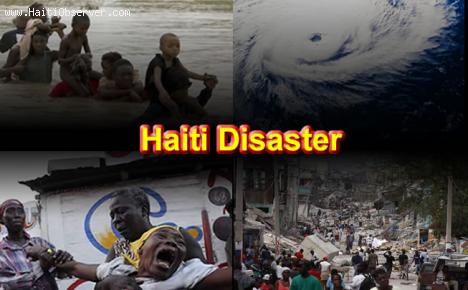
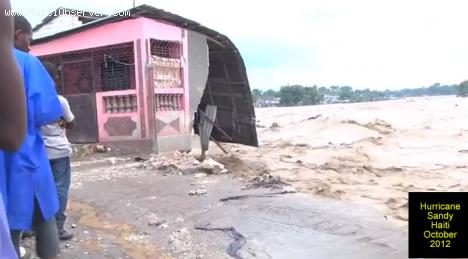
 Battle of Vertieres
Battle of Vertieres 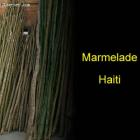 Marmelade, Haiti
Marmelade, Haiti 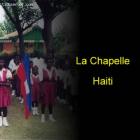 La Chapelle, Haiti
La Chapelle, Haiti  Haitian Creole Translation
Haitian Creole Translation 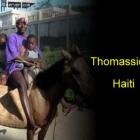 Thomassique, Haiti
Thomassique, Haiti